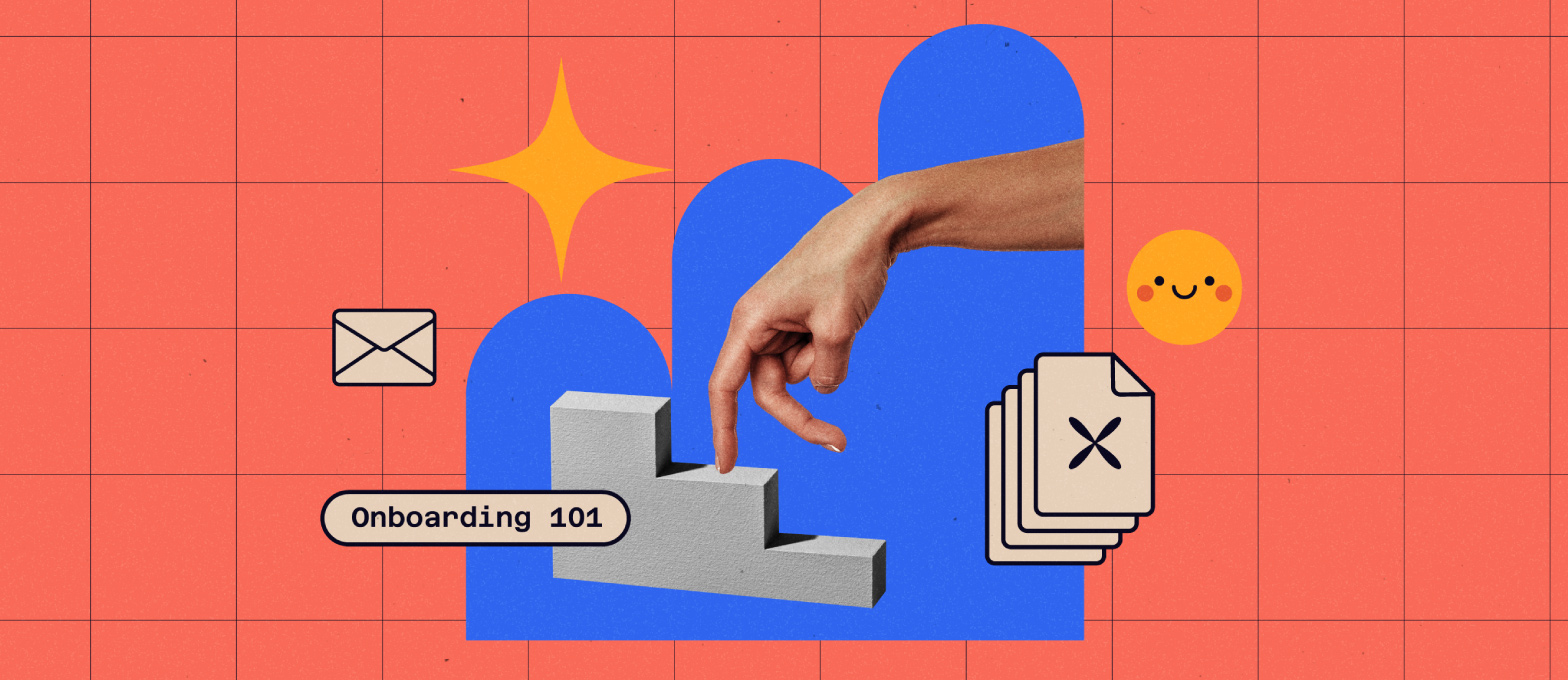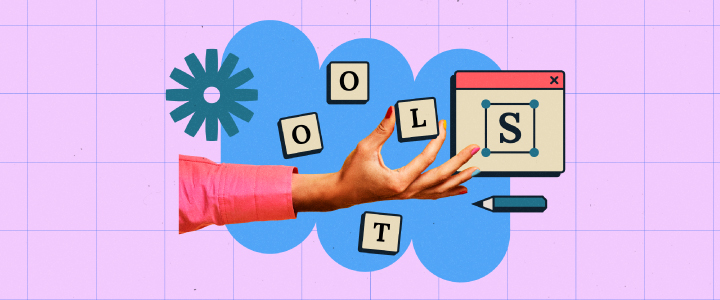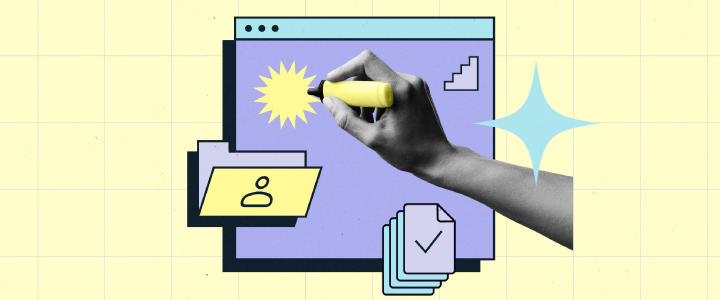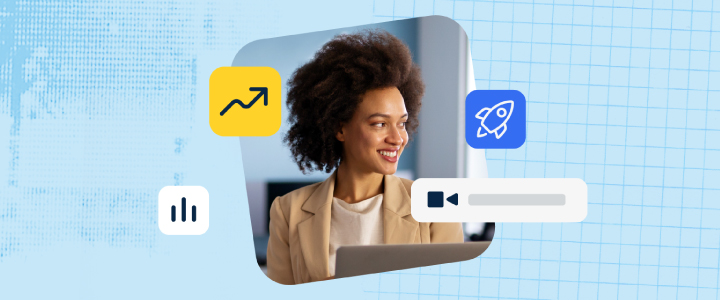
7 min reading time
Employee Onboarding: The Beginners's Guide
You already know why onboarding is important in your organization – the payoffs are clear and proven. But where do you start? In this article, we share our learnings so you learn everything from how to develop an employee onboarding plan, to the right fit onboarding software solutions for your organization.
Ready to deliver the best employee onboarding experiences to set your new hires up for success from day one? Let’s get started!
The Importance of Onboarding
Think back to every new job you had – what kind of training did you get? Was it helpful? How long did it last? Which job did you feel most prepared for? Was it because of the training? While taking courses can be time-consuming if you’re already in a role, they can be a life-saver for new hires. It gives them the chance to ease into a new role or company (which, let’s face it, can be daunting no matter how many times you do it!).
Introduction to Company Culture
According to a Deloitte survey, 80% of organizations allow some level of remote and hybrid ways of working. That same report noted that 43% of businesses found that creating a remote company culture was one of their top challenges. Adding to that, only 28% of remote workers say they feel strongly tied to the mission and purpose of their organizations in 2023.
Encourage Communication
This ties on nicely to our point on company culture. Regular check-ins make all the difference to a new hire. Just read what Meighan Newhouse, Forbes writer, had to say about her experience. Not only does it afford the new hire to ask questions and connect with their team, it allows the manager to see their progress and note any areas for improvement, benefiting everyone involved.
How Does Onboarding Impact Employee Performance?
A strong onboarding experience sets the stage for your employee’s and your business’s success; It engages your new hires, increasing loyalty and productivity, which, in turn, impacts your business. According to Gallup, businesses with a strong onboarding experience saw a 43% reduction in employee turnover.
Improved Performance
One of the clearest benefits employee onboarding has for an organization is its impact on productivity rates. Companies that have a strong onboarding process boast 70% greater new hire productivity when compared to those who don’t have any onboarding procedure at all. This means more success for your employees, your business and your customers. Read how Sonic Automotive boosted their profits and employee productivity with a learning solution.
Increased Retention
Reported as one of the top long-term benefits by businesses, onboarding increases employee retention. A great onboarding experience avoids the time- consuming, costly fallout of high turnover, and keeps your employees around for longer. In fact organizations with an onboarding process experience 80% greater new hire retention and 69% of employees are more likely to stay with a company for three years if they experienced great onboarding. With employees showing less loyalty to employers, this is an invaluable tool.
How to Develop an Employee Onboarding Plan
Onboarding encompasses a lot of things. There’s so much for your team to consider and implement and a lot of information for your new hire to take in. It can be overwhelming. This is where an employee onboarding plan comes in. Think of it as a blueprint that outlines every aspect and eventuality of the onboarding process. In this next section, we’ll share a few ways to develop a plan of your own and, for a more detailed plan, download this template.
Know your employee onboarding goal
Before you jump in and plan content, it’s important to know why you’re onboarding your employees – what is the goal? Commonly, the aim of onboarding is to “acquire the necessary knowledge, skills, and behaviors in order to become effective organizational members and insiders.” But what does this actually mean for your business? It’s essential to have concrete goals for what you want to achieve. This should encapsulate:
- Setting expectations for the learner
- Outlining the skills your learner should gain through onboarding
- Establishing a clear company culture/code of conduct for the new hire
Create your onboarding training team
The next step to building an eLearning onboarding strategy is to figure out who’s involved. Depending on your company size, structure, and role, this varies. For some, it’s an HR, L&D or Training & Development task with little to no input from anyone else. Others see it as a group effort with managers, HR, and co-workers all involved.
Invest in the right tools
Team members, content, timelines – these are all significant aspects to plan when onboarding. But, one of the most important is planning for the tools you will be using to onboard your new hires and how these affect the onboarding journey. It’s essential to think about the tools you’ll need (like an HR system) to collate resources and engage with the employee. Are you also going to get an LMS to deliver onboarding training? Or go for a blended learning model with a mix of face-to-face and online training?
Find the Best Onboarding Training Software
Every trainer dreams of improved performance and engagement, increased retention, a shorter learning curve and cost savings. That’s why it’s crucial to have the right employee onboarding tools. On average, companies have 44 days to influence a new hire’s long-term retention with a fantastic new starter experience. That’s not a lot of time to impress! It’s crucial to curate the best experience possible by understanding its importance and how to implement your strategy. Discover how to create an onboarding software solution ecosystem in this guide.
An LMS (Learning Management System)
An LMS is one of the most powerful solutions to help you onboard your employees. It works by enabling you to deliver, manage, and track the new hire training process. Purpose-built LMSs like LearnUpon allow you to create engaging courses, set exams and assignments, collate resources, automate managing of onboarding, and much more. It’s the heart of your onboarding training software ecosystem if you’re looking to deliver efficient and effective training. Find the right LMS for your organization with this Buyer’s Guide.
HR System
Another core solution your business should invest in if you haven’t already is an HR system. They organize and manage the onboarding process, from paperwork to employee records, and more. There are lots of HR systems on the market, like BambooHR, and it’s down to you to discover which is best for your organization.
Project Management Tool
Asana, Teamwork, Trello, Basecamp, Jira – there are plenty of great project management tools on the market. They not only help your team plan new hire onboarding step-by-step, but they can also be used to set goals for your employees that keep them on the right track.
Find the Right LMS for onboarding Employees
The best onboarding programs aren’t just constructed by subject matter experts. They’re built by teams who truly understand how to mix content and tools, in this case, a learning management system (LMS), to make a process that’s efficient and achievable.
Add Your New Hires to Your LMS
The first step in creating an LMS for employee onboarding is to establish how you’ll be adding your employees to your LMS so they can access their training. You’ve got several options here. Batch uploads allow you to add multiple employees via CSV to your LMS all at once. Alternatively, you can manually add each learner one by one. As we’ve mentioned above, you should be able to integrate your LMS with your HR system.
Connecting these two systems removes the middle man – your team – and cuts out a recurring manual task. It’s simple. When a new hire is added to your HR system, their data is sent to your LMS too and an account is created. No extra work is needed from you, there’s less chance of errors, and you have peace of mind that your learners have access to the training needed.
Automate Enrollments
Now that you’ve automated how you add users to your LMS, it would be less than ideal to have to manually enroll every learner. So, it’s a good idea to create auto-enrollments to your onboarding program. It’s a simple process; you set your own criteria that assign learners to courses within the LMS. So, for example, when your new hire is added to your LMS, you can create rules that any new user is automatically added to a “Welcome to the Company” onboarding course and beyond initial setup, there’s no further input needed from you. Watch here to learn how to personalize the onboarding journey and equip new hires for success.
Group Learners
Different hires require different training and need access to particular courses. You can make sure this happens with groups. Groups are a feature that separates your learners into segments with each one having their own tailored content. You can create groups based on whatever criteria you wish (teams for example; customer support, sales, marketing) and once a new hire logs into your LMS they have access to all the same courses as their fellow team members.
How to Measure Successful Onboarding LMS and eLearning Implementation
Ok, you’ve built an onboarding LMS program that streamlines the way new hires join and experience your company. Great! But the work doesn’t stop there. To ensure your onboarding experience is hitting the goals you set for it and continues to evolve and improve over time, you’ll need to implement a robust system for measuring performance and gathering feedback.
Tracking Onboarding Metrics and KPIs
Data is your best friend when it comes to optimizing your onboarding program. Work with your LMS to track key metrics and KPIs that align with the goals you set earlier, covering these five main areas:
- Completion rates
- Feedback from new hires
- Time to completion
- Learning effectiveness
- Post-onboarding performance
Go to this guide for more details on how to measure your onboarding’s success.
As you move forward with building your onboarding program, remember to stay agile, curious, and committed to continuous improvement. But most importantly, don’t be afraid to think big. Onboarding isn’t just about checking boxes and getting new hires up to speed – with the right plan, the right tools, and the right mindset, it’s an opportunity to deeply shape the culture and future performance of your organization.
So, what are you waiting for? Let’s go and build your dream new-starter experience today.





